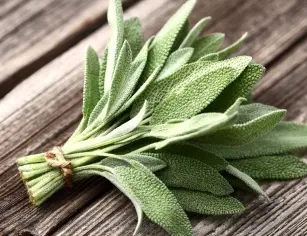Contents

Sage has many properties not only for health. It is helpful not only in healing. You can reach for it in the kitchen, to refresh the wardrobe or simply use it as a decorative plant. As many as 700 species of sage have been classified around the world. Spanish sage, or chia, is one of the rarest and recently the most popular.
Chia seeds – what and how to eat
The seeds can be used as an addition to salads, cocktails, muesli, oatmeal or potatoes and cakes (then the ground seeds are added to the flour). One thing to remember: to soak the seeds in warm water beforehand. They are a rich source of fiber – they provide as much as 25% of its daily requirement. Chia seeds are also a source of calcium and many vitamins and minerals, such as vitamins E, B3, zinc, iron, potassium and magnesium. What else will Spanish sage provide our body with? Easily digestible protein and unsaturated omega-3 and omega-6 fatty acids. This plant is also recommended for diabetics because of its glucose-stabilizing properties.
Sage officinalis – how can it help?
- shiny, healthy hair – sage leaves are a natural cosmetic that nourishes the scalp, improves blood circulation and accelerates hair growth. It can also be used in the fight against graying and hair loss. Self-made strong infusion is helpful in the fight against dandruff
- fights infections – sage helps fight infections thanks to the tannins it contains – we reach for it for bleeding gums, sore throat, tonsillitis, runny nose and fever
- treats ailments of the digestive tract – recommended in abdominal colic, indigestion, flatulence, intestinal cramps. It also prevents the formation of intestinal gas. If consumed regularly, it will stimulate the appetite and help maintain the proper functioning of the digestive system
- improves mental functions – improves mental functions and memory. It is helpful in keeping the brain alert. Chinese sage is particularly helpful in combating Alzheimer’s due to the content of acetylcholine esterase inhibitors that delay the development of the disease
- relieves the symptoms of menstruation and menopause – sage contains plant compounds with estrogenic activity. They help regulate painful and heavy menstruation, affect the abnormal blood flow. In turn, during menopause, they relieve hot flashes and night sweats. In addition, it reduces mood swings and insomnia
- improves skin condition – when used regularly, it delays the aging process of the skin, prevents the formation of wrinkles. Sage oil used in skin massage has a rejuvenating effect and helps regenerate cells. In addition, sage treats acne, eczema, psoriasis, ringworm and cracked skin
Sage at home – how to use
Sage tea – chilled can be used to rinse the face – it has a soothing effect. To prepare the tea, boil a handful of sage leaves in a cup of water. After 10 minutes, strain the leaves. Chilled infusion can be used as a rinse for the mouth and throat.Sage tea pita twice a day for a month will help fight the symptoms of rheumatoid arthritis.









